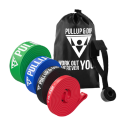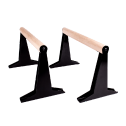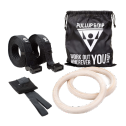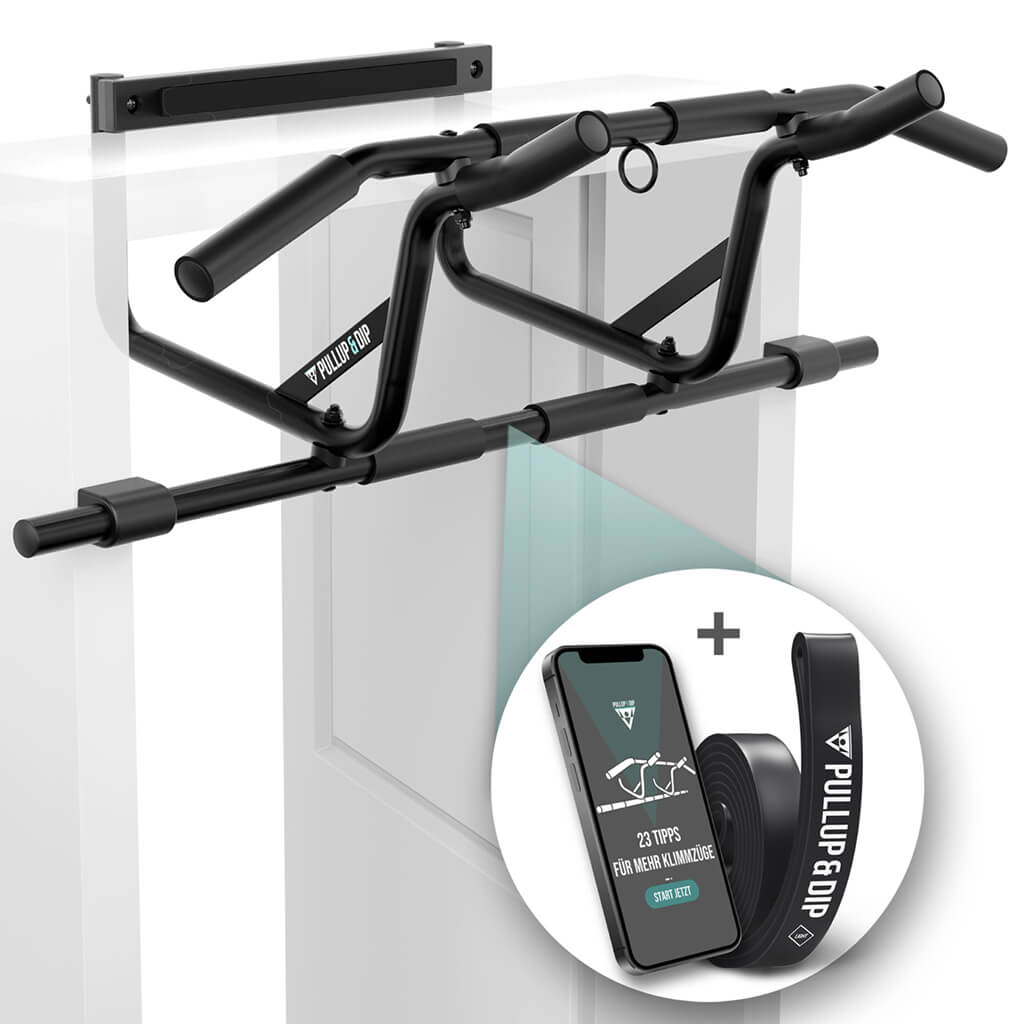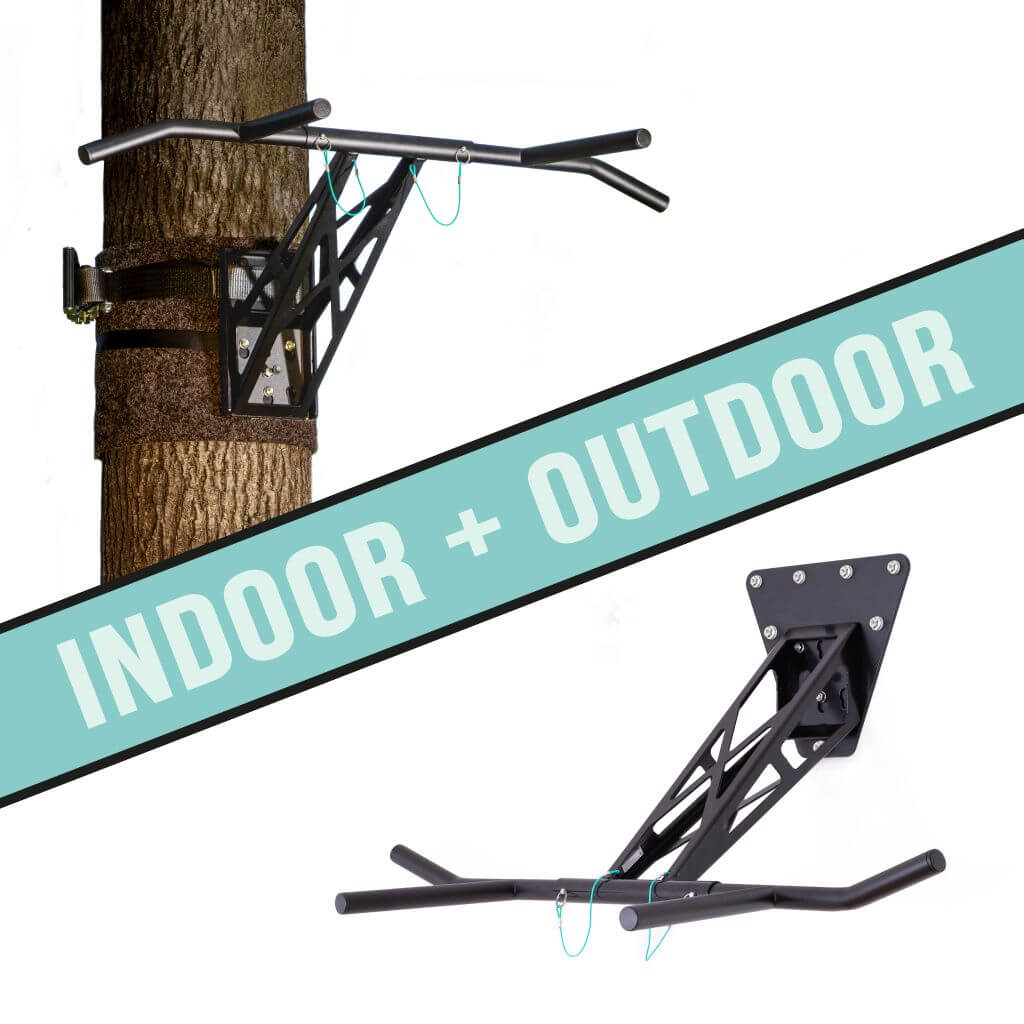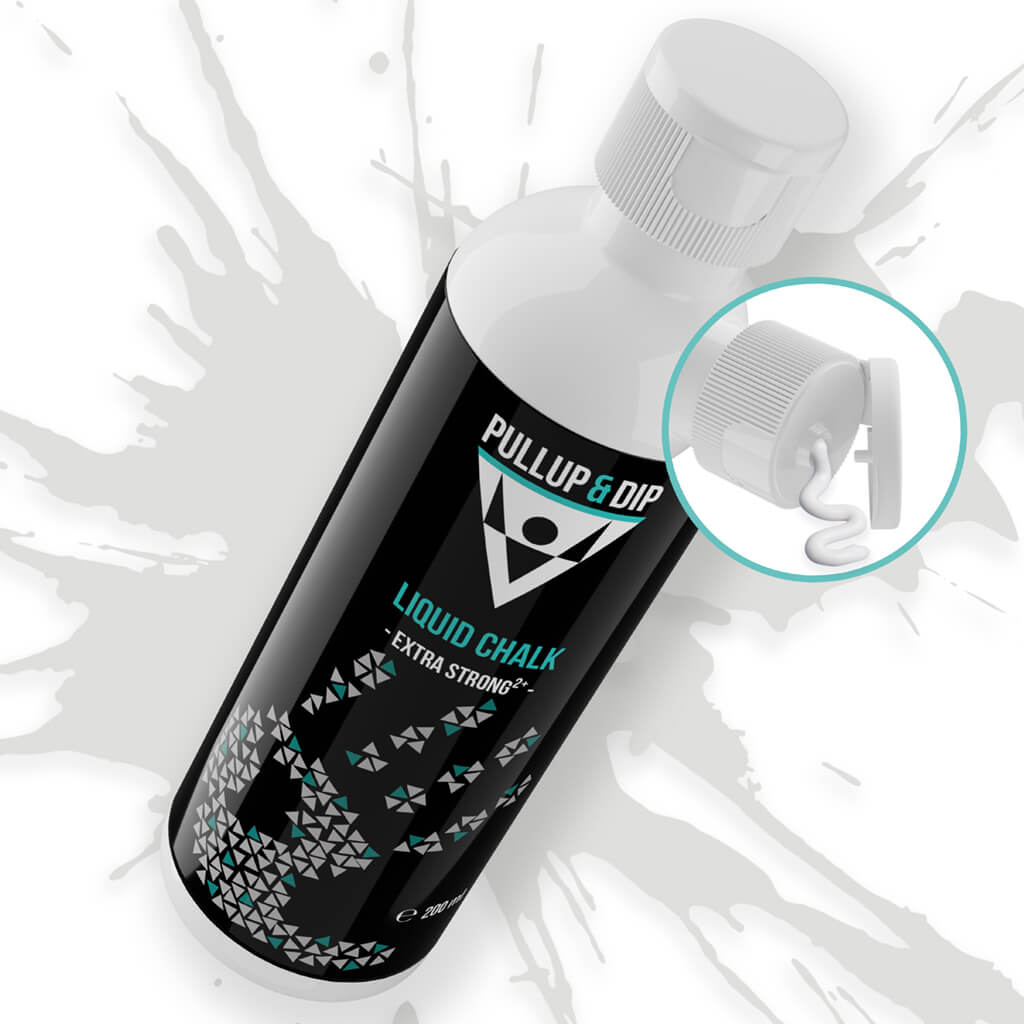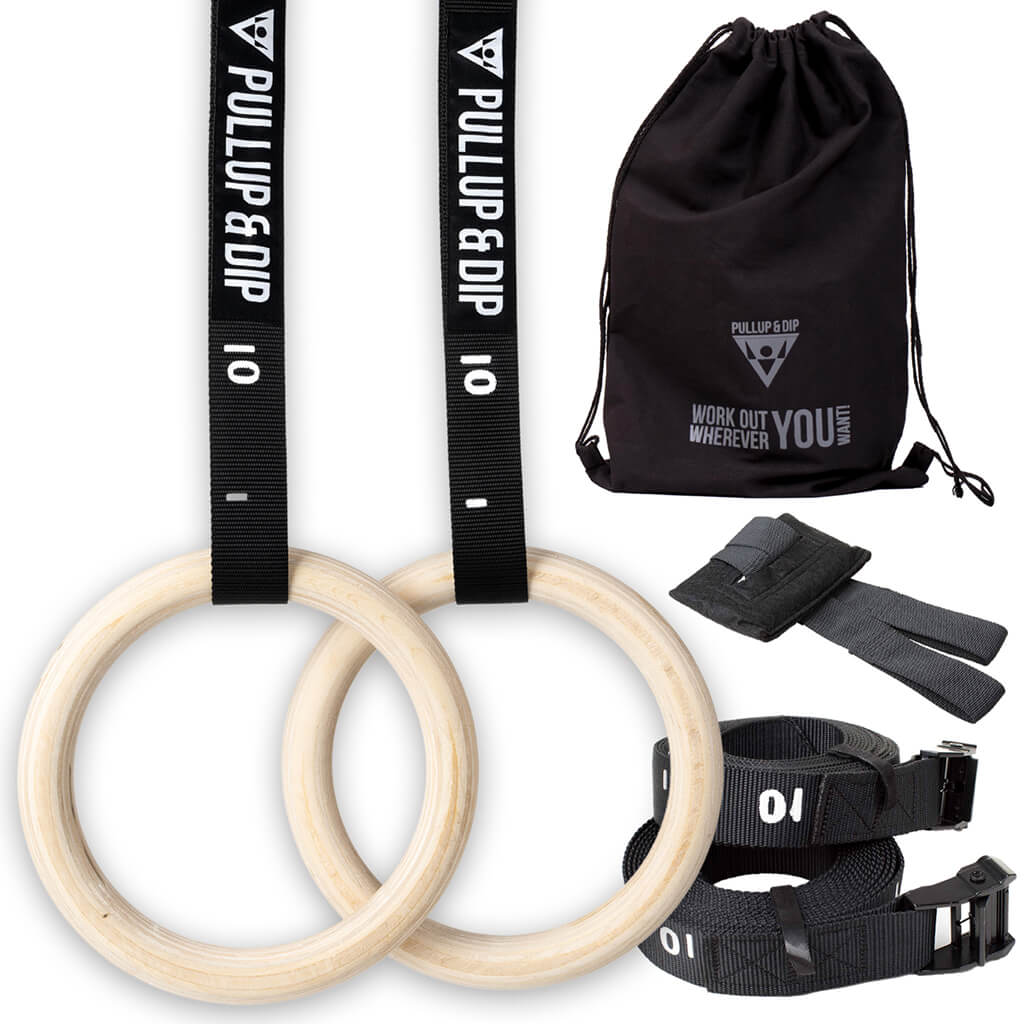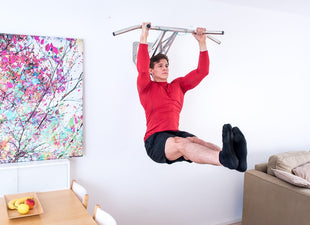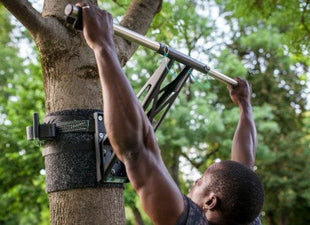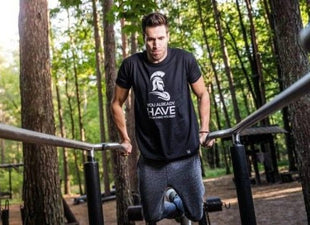Pull-up alternatives give you the chance to make your back training more versatile. For example, there are alternative exercises that allow you to train at home without any equipment. There are also many useful pull-up alternatives in the gym that allow you to move your back training from outside to inside in the warm in winter.
Whether you're abeginner or advanced: there are suitable pull-up alternatives for everyone, which can be used to work most of the same muscle groups as pull-up training. Are you ready to expand your exercise repertoire? Then have fun with the exercises in this blog post!
General information about pull-ups

Before we turn to our 8 pull-up alternatives, we would like to say a few general words about pull-ups. Pull-ups are the basis of numerous back exercises in calisthenics. In our blog post "
How to perform pull-ups correctly:
- For pull-ups, grip a bar wider than shoulder width. Lift your legs off the floor by bending them, for example. Your body hangs from the bar.
- Pull yourself up slowly and straight using the strength of your arms. Tense your body so that you don't swing back and forth, but perform the exercise cleanly.
- You reach the top point when your chin is level with the bar. Exhale as you pull yourself up.
- From the top point, lower yourself down slowly and in a controlled manner. Inhale as you do so.
- Repeat the exercise several times.
Use a stable bar so that the exercise is always safe. The bars in calisthenics parks are perfect for pull-ups. In addition, our mobile pull-up bar and dip bar for indoor and outdoor top equipment for training pull-ups and other exercises.
Versatile muscle training with pull-ups
If you would like to know more about the muscles that you train with pull-ups, take a look at our blog post "
When are pull-up alternatives useful?
Up to this point, it sounds like pull-ups are a must-have exercise in calisthenics. That's true, but not everyone can do pull-ups. In this case, it's good to know several pull-up alternatives. If you perform the pull-up alternatives, you can increase your strength and improve your skills so that you can do the right pull-ups at some point. Both at home and in the gym, the pull-up alternatives are the perfect way to approach your first real pull-ups.
Can you do pull-ups but don't have the equipment because you don't have space for a pull-up bar at home, for example? If you want to train at home without a pull-up bar, the first 4 pull-up alternatives in this blog post offer you plenty of options.
If you regularly train pull-ups in the gym and want to stop doing pull-ups for a while and create more variety, our 4 pull-up alternatives in the gym are also interesting for you.
The muscle strain in the pull-up alternatives is similar - sometimes less and sometimes more intense than with pull-ups. You can therefore train your back muscles and biceps efficiently with the following 8 pull-up alternatives.
4 pull-up alternatives for at home
Our 4 pull-up alternatives for at home are ideal for you if you don't have a pull-up bar at home or can't do pull-ups yet. We have arranged the 4 pull-up alternatives so that we start with the easiest exercise and then slightly increase the level of difficulty.
1. rowing on the edge of the table
To successfully use the edge of the table for your deadweight training, you need a stable table. It should not tip over when your body weight is on one side. Because you place your feet on the floor during this exercise, it is a less strenuous pull-up alternative - ideal for beginners and people who want to build up strength for real pull-ups. Now to the procedure:
- Sit under a table and grasp the edge of the table with your hands in an overhand grip. With this grip, the back of your hand points towards you.
- While holding on to the edge of the table, stretch your legs out straight, with your legs together and your feet resting on the floor with your heels.
- Make sure that your body forms a straight line from your feet to your head while you hold on to the edge of the table with your hands. To do this, tense your body.
- Pull yourself up until your head is approximately level with the edge of the table.
- Lower yourself slowly and in a controlled manner until your arms are fully stretched. Then pull yourself up again and repeat the exercise several times.
2. lat pulldown with resistance band

This exercise mimics the pull-up movement. However, the resistance is not your body weight but the resistance band. For this pull-up alternative, we provide you with our resistance bands in various strengths recommended. Thanks to the different strengths, you can always adapt the intensity of the training to your progress so that you are not overwhelmed by the training. And this is how the lat pull-up with resistance band works:
- You grip the band with both hands so that it is slightly under tension and your hands are about shoulder-width apart.
- Now move your arms with the band up and behind your head.
- Then start to move your arms apart behind your head in a straight line until they are stretched out to both sides.
- Slowly bring your arms back behind your head to the starting position.
There are other instructions for the lat pulldown with resistance band that differ from this one. For example, you can attach the resistance band to a hook on the ceiling or to a sufficiently thick branch. Then pull your arms down against the resistance of the band, as you would with the lat pulldown in the gym.
3. Australian pull-ups on rings

The starting position for Australian pull-ups on rings is the same as for rowing on the edge of the table. In principle, the exercise is also the same - with the difference that this time you are hanging from the rings. Here's how it works:
- You grab the rings, which hang at about hip height, from below and let yourself hang from the rings.
- Stretch your feet close together again and straight forward. Your body forms a straight line from head to toe. Keep your body tensed for this.
- Pull yourself up by the rings until your head is approximately the same height as the rings.
- Now slowly lower yourself until your arms are stretched out. Then pull yourself up again and repeat this exercise several times.
When you perform Australian pull-ups on rings, you are increasing the level of difficulty compared to rowing on the edge of the table. This is because training on rings requires a higher level of muscle tension and therefore greater effort. This pull-up alternative prepares you even better for the real pull-ups. If you don't have any rings yet, then our wooden gymnastic rings (incl. sports bag) are just right for you!
4. reverse elbow push-ups
You don't even need any equipment for reverse elbow push-ups as an alternative to pull-ups. You don't need a table edge, rings or any other equipment, but you can still work your back muscles with this exercise! To protect your elbows and make the workout more comfortable, it's a good idea to use a mat underneath. Then get started:
- Lie on your back. Your legs are stretched out straight and rest loosely on the floor. The forearms point upwards while the upper arms rest on the floor.
- Now tense your upper body from your hips to your head and start to push your upper body up by pressing your elbows into the floor.
- You have reached the top point as soon as your upper body is at approximately a 30° angle to the floor.
- Do the backward movement slowly and place your upper body back on the floor.
- Then inhale and push yourself up again, exhaling as you do so.
4 pull-up alternatives in the gym
We at Pullup & Dip are without a doubt absolute fans of deadweight training! With calisthenics exercises, you train your muscles in combination and work your body holistically - training is hardly as efficient anywhere else. What's more, you can do deadweight training pretty much anywhere. Nevertheless, the pull-up alternatives in the gym are a good addition to self-weight training.
Free weight training and training on machines also help your muscles to grow. Above all, you can set new stimuli if you usually only do calisthenics and your body hardly knows the exercises in the gym, if at all. The 4 pull-up alternatives in the gym will prepare you well for performing pull-ups, but you can also use the exercises to train specific muscles in isolation if you see deficits in these muscles.
5. lat pulldown

The lat pull down in particular is an ideal preparation for the correct pull-ups. Why? With this pull-up alternative, you set the resistance (usually between 5 and 120 kg) individually. For example, if you weigh 80 kg and can't do a pull-up cleanly or at all, you can start with 50 kg as resistance on the lat pull-up. If you do it properly, you will gradually build up strength, then gradually increase the resistance and eventually reach 80 kg or even more.
After regular training on the lat pull-down, you should slowly be ready to do a proper pull-up. This will bring you closer to your goal with the help of the lat pull-up:
- Choose the resistance on the machine and adjust the seat so that you are sitting securely and comfortably.
- Grasp the handle and keep your hands wide enough so that your forearms and upper arms form a right angle.
- Pull the lat handle down towards your chest until it is approximately just above your nipples, keeping your entire upper body tense and straight.
- Now slowly let the handle up again until your arms are almost stretched out. Then pull the handle down again. Repeat this exercise several times.
- Breathe out as you pull the resistance downwards and breathe in as you release the resistance upwards.
6. barbell rowing

The barbell row is interesting because it works the hooded muscle more specifically and more intensely than pull-ups. This makes barbell rowing a pull-up alternative that helps you to eliminate visual imbalances that can occur if you otherwise only train one variation of pull-ups and thus make your training too one-sided.
In addition, barbell rowing requires you to tense your lower back muscles and abdominal muscles more than pull-ups. With this version, you will secure the special benefits and training accents of barbell rowing:
- Put your desired weight on the barbell and secure the plates on both sides with the clamp so that the plates don't slip off the barbell during training.
- Stand with your feet shoulder-width apart and bend your thighs slightly - as if you wanted to squat.
- Bend your upper body forward by approx. 45°. The upper body must always be tense and straight in the starting position and during the exercise.
- Grip the bar with an underhand grip so that your fingers are pointing upwards towards you. Grip the bar so that you can keep your elbows close to your upper body.
- You remain in the starting position described in steps 2 and 3 throughout the exercise as you pull the barbell towards you and lower it again.
- The upper point is where your upper arms are parallel to your upper body. Then lower the weight again until your arms are extended.
- Repeat the exercise several times. Make sure that you don't let your wrists bend backwards, but always keep your hands straight as an extension of your arms.
7. single-arm rowing with dumbbells

One-armed ro wing with dumbbells is similar to barbell rowing. However, with this pull-up alternative you usually support yourself on a bench, which is why you don't have to tense your lower back muscles and abdominal muscles as much as with barbell rowing. This allows you to focus all the more on performing the exercise correctly. Ideally, this exercise should be performed as follows:
- Choose a dumbbell with an appropriate weight. Ideally, the weight is chosen so that you can do 3 sets of 8-10 clean repetitions each.
- Decide which side of your back you want to train first. Let's start with the left side...
- Grip the dumbbell with your left hand using the overhand grip. Place your right knee on a bench and stretch your foot comfortably backwards.
- Support yourself further up on the bench with your right hand. Your upper body should form a straight line from your head to your buttocks and be tense.
- Now pull the dumbbell in your left hand upwards by moving your elbow close to your upper body.
- As soon as your upper arm is parallel to your upper body, you have reached the top position and slowly lower the dumbbell down.
- What many people do wrong is to lower their arm straight down. Do it right: keep the forearm bent at an angle of just under 45° to the upper arm. This angle between the forearm and upper arm allows you to train your back more effectively.
- Do several repetitions until the left side is finished and the right side is next.
8. assisted pull-up machine
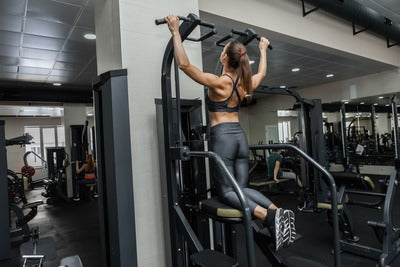
The assisted pull-up machine is THE top pull-up alternative if you want to prepare for real pull-ups. The machine has a support for your knees to help you pull yourself up and complete the pull-up. This means you are doing a pull-up that is assisted by the counterweight, making it easier for you. This is how it works:
- Set the counterweight so that it helps you to complete 5-10 clean pull-ups. To determine the ideal counterweight, you will first need to gain some experience in using the machine.
- As soon as the counterweight is inserted, kneel down on the rack. Hold the pull-up bar slightly wider than shoulder width, as is usual for pull-ups.
- Now use the strength of your arms to pull yourself up slowly and in a controlled manner until your chin is level with or just above the pull-up bar on the machine.
- Tense your body as you perform the movement. Tensing your body is not necessary on this machine, but it prepares you well for the correct pull-ups.
- From the top point, lower yourself down slowly and in a controlled manner until your arms are stretched out. Then move back up and repeat the exercise.
Conclusion: pull-up alternatives as a contribution to varied training
Pull-ups are and remain the most effective deadweight exercise for your back muscles. You should always make an effort to incorporate pull-ups into your training frequently. Nevertheless, it is worth knowing the pull-up alternatives.
On the one hand, pull-up alternatives are the ideal stepping stone for beginners who are not yet able to do pull-ups in order to build up sufficient strength and quickly master pull-ups on their own. On the other hand, advanced users also benefit from the pull-up alternatives, as the alternative exercises make it possible to add variety to your training at home and in the gym.
Choose the pull-up alternatives of your choice and add variety to your training! Your muscles will certainly be grateful for the new stimuli you create.
Are you looking for a pull-up bar to train pull-ups effectively?
At Pullup & Dip, we offer high-quality pull-up bars for your home and garden.
 Other Equipment
Other Equipment
 Gripping Aids
Gripping Aids
 Bandages
Bandages
 Tapes
Tapes
